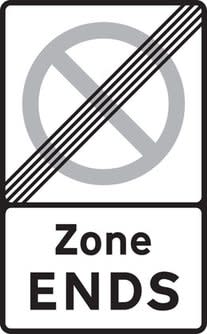Theory test questions and answers
There are 50 driving theory questions in the test, which are drawn from a bank of over 1,000. These are selected based on the information in the Highway Code. You have 57 minutes to complete them and you need 43 correct theory test answers to pass (which comes to 86%).
Theory test pass rate
You can only afford to get eight theory test answers wrong if you’re going to pass the theory test. The theory test pass rate for 2018-19 was just 47.4% - lower than the pass rate for the practical test, and the lowest it’s been in a decade according to Auto Express! We’ve drawn up a list of the hardest driving theory questions so that you can book your theory test with full condidence that you've given yourself the best possible chance of passing!
What are the hardest theory test questions and answers?
Of course, everybody is different and the hardest theory questions for one person might be a piece of cake for another. For example, you might have a great visual memory and nail questions about the meaning of road signs every time, but someone else may have a good head for numbers and easily remember everything to do with stopping distances.
That said, there are some theory questions and answers that catch people out more than others…
Top 10 hard theory test questions 2019
Try answering these hard theory test practice questions to get yourself prepared for your big day.
1. You see a pedestrian with a dog wearing a yellow or burgundy coat. what does this indicate? The pedestrian is:
a) Elderly
b) Dog training
c) Colourblind
d) Deaf
This is a particularly hard theory question because if you don’t know it already, you won’t be able to work the answer out! The correct answer is D. There are many different types of assistant dogs who can be recognised by the colour of their jackets, but hearing dogs can usually be spotted by their burgundy or yellow coats.

2. In which of these situations should you avoid overtaking?
a) Just after a bend
b) In a one-way street
c) On a 30 mph road
d) Approaching a dip in the road
This is one of the hardest theory test questions. You should always think twice before overtaking, so depending on the context any of these answers could be correct. However, there’s only one answer here that’s always correct, regardless of the context. So, the correct answer is D - ‘approaching a dip in the road’.
3. What does this sign mean?

a) End of restricted speed area
b) End of restricted parking area
c) End of clearway
d) End of cycle route
You should aim to do a lot of these types of theory practice questions because there are so many road signs to memorise and it’s easy to get confused. With this particular theory question, all the answers look quite similar on the page, which makes it even harder! The correct answer here is B - ‘end of restricted parking area’.
4. You are travelling at 50 mph on a good, dry road. What is your typical overall stopping distance?
a) 36 metres (118 feet)
b) 53 metres (175 feet)
c) 75 metres (245 feet)
d) 96 metres (315 feet)
This might seem like one of the hardest theory test questions for someone who doesn’t have a head for numbers, but thankfully there’s a formula that can be used to calculate this: stopping distance equals reaction or thinking distance, plus braking distance.
Thinking distance is the distance your car will move while you’re reacting to a situation and braking distance is how far your car will move while you’re pressing the footbrake.
The official thinking distance for 50 mph is 15 m and the braking distance is 38 m. Add those together and you’ve got the correct answer: B - ‘53 m’.
Don’t forget that weather conditions and the condition your vehicle’s in can affect stopping distance - questions may add extra information like this to try and trick you!
5. At a puffin crossing, which colour follows the green signal?
a) Steady red
b) Flashing amber
c) Steady amber
d) Flashing green
At first glance, this might not seem like one of the hardest theory test questions and answers. But while you might be familiar with a puffin crossing, it can be easy to get confused between puffin and pelican crossings! Puffin crossings work using sensors that detect when pedestrians are crossing, meaning there’s no flashing amber phase. So, the answer is C - ‘steady amber’.
6. What percentage of all emissions does road transport account for?
a) 10%
b) 20%
c) 30%
d) 40%
This is a hard theory test question if you’re not too well versed with environmental issues! But luckily you can use the elimination method to come to the right answer. Traffic is a huge contributor to air pollution, but 40% seems a bit much and 10% is too little - the answer is B - ‘20%’.
7. You're towing a small trailer on a busy three-lane motorway. All the lanes are open. You must:
a) Not exceed 50 mph
b) Not overtake
c) Have a stabiliser fitted
d) Use only the left and centre lanes
This theory question might be difficult to answer if you haven’t gone over your motorway regulations in detail. The first option, ‘not exceed 50 mph’, might look tempting, but in reality, you’re not allowed to exceed 60 mph. According to the regulations, you absolutely can’t use the right-hand lane on a three-lane motorway (unless told to do so due to lane closure or roadworks), so the correct answer is D - ‘use only the left and centre lanes’.
8. At an incident, it is important to look after any casualties. When the area is safe, you should:
a) Get them out of the vehicle
b) Give them a drink
c) Give them something to eat
d) Keep them in the vehicle
This one has a bit of a trick theory test answer because it requires you to do nothing at all! The correct answer is D - ‘keep them in the vehicle’.
This might go against your instinct because many theory practice questions concerning incidents, accidents and emergencies state that it’s best to remove casualties from the car (for example if the vehicle is at risk of catching fire or in imminent danger).
The key to this theory question is that ‘the area is safe’. Make sure you read every question carefully so you don’t miss important details like this one!
9. You are waiting to emerge left from a minor road. A large vehicle is approaching from the right. You have time to turn, but you should wait. Why?
a) The large vehicle can easily hide an overtaking vehicle
b) The large vehicle can turn suddenly
c) The large vehicle is difficult to steer in a straight line
d) The large vehicle can easily hide vehicles from the left
This is one of the hardest theory test questions for those who struggle with their lefts and rights! Take the time to really build up the scenario in your head before answering. In this case, the answer is A - ‘the large vehicle can easily hide an overtaking vehicle’.
10. When may you overtake another vehicle on the left?
a) When you’re in a one-way street
b) When approaching a motorway slip road where you’ll be turning off
c) When the vehicle in front is signalling to turn left
d) When a slower vehicle is travelling in the right-hand lane of a dual carriageway
This is a confusing driving theory question in anyone’s book - but option C makes it even more so, by repeating the word ‘left’ from the question. This can tempt people to jump ahead and select option C before reading the question carefully. In reality, if you were to overtake someone on the left while they were also attempting to turn left, it would probably result in a collision!
The correct answer is A - ‘when you’re in a one-way street’. That’s the only time you should overtake a vehicle on the left.
Theory test questions and answers 2020
So now you’ve experienced some of the hardest driving theory questions, you’re well-placed to ace the theory test! But you’ll still need to study the highway code and spend some time answering theory practice questions.
You can have a go at answering common theory test questions 2020 by completing the DVSA practice theory tests. Good luck!